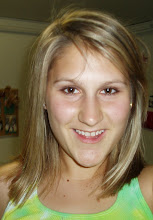After talking with the pharmacist during a few visits to the hospital, I have become interested in two topics that I want to pursue as research projects this year. First, I would like to determine patients’ adherence to ARVs and factors that influence adherence/nonadherence. After determining this baseline data, I would like to start a project that improves the current down referral system. All staff members that I have spoken with have emphasized the currentfailure of down referral. Down referral is when the hospital begins to refer its patients to local clinics for treatment in order to alleviate their patient burden. The idea is to allow patients who have successfully taken ARVs for at least three months to retrieve their medication and have their adherence tracked locally, rather than at the busy hospital. This move would clear up more space for new patients to seek treatment and eliminate travel for patients. The system sounds great in theory, but in practice, it has failed in Galeshewe. The main problem lies in the fact that the clinics are not adequately prepared to handle the down referrals. Patients recognize that the clinic staff do not know how to adequately counsel or check adherence. Another issue is that the level of anonymity decreases when local clinics are used. Patients are more easily recognized by neighbors and other community members when they travel to the clinic and everyone knows how quickly gossip spreads, especially when it’s related to HIV. Stigma is obviously an enormous barrier to overcome in regards to HIV and many patients may prefer to expend the extra money and energy to transport themselves to the hospital rather than undergo the watchful eyes of suspecting gossipers.
We’re also staying pretty busy with other GRS projects. Lindsay recently started a Skillz Street League for girls. I assist her at the practices that are held twice a week. It’s definitely the highlight of my week. I’ll write more about it soon! I’m also heading a VCT that we’re holding on December 5th in honor of World AIDS Day (Dec. 1st). It combines soccer, GRS games, and HIV testing. More to come about this as well. Immediately following the VCT, we are going to have another weeklong holiday camp. And, in January, we are planning on having a TOC (Training of Coaches) to train about 30 new coaches. So, we have a lot on our plate right now, to say the least. But we’re all happy to be busy and playing such vital roles in the Kimberley site.
In other news, I ran my first half marathon this weekend! I never thought that my longest run would be in Kimberley, South Africa, on rather mundane roads, but I still enjoyed it. About halfway through the race, a 50-year old Afrikaner woman began talking to me. She shared that she has raced an 85km race 14 times now. When asked if I was planning to do it, I just laughed. It takes her 11 hours to run it – way longer than I want to be running. The best part of the race was about the last two miles, when my amazing roommates tracked me down in the car and became my mobile fan club. They danced, cheered, and tried to make me laugh. It was such a great surprise, as they had told me they had absolutely no interest in waking up early on a Saturday morning (the race started at 6am) and I couldn’t blame them. Their ridiculousness made my day.
I thought I would include a picture of our visit to Port Elizabeth, where we reunited with 10 other interns for Halloween. It was my favorite weekend vacation we’ve taken so far. Although it looks like we went surfing, Hooter was really the only successful one. Still, I loved just being in the ocean. I’m definitely jealous of the interns who live there and get to go surfing before work.

Besides the half marathon, we’ve been having a relaxing weekend – tennis, lounging in the garden, reading, going out to brunch. The weather is getting warmer (in the 90s some days) and in the past month, we’ve had some intense thunderstorms. I’m looking forward to the week ahead and making some progress on our many projects. We’re hoping to go back to Lesotho next weekend and spend some time in Semokang. It’s a small village in the mountains that has the longest commercial abseil in the world. Abesiling is like repelling down a mountain face. This one is 206m down a waterfall. I think I’m going to have to get over my fear of heights for this one. It sounds too incredible to pass up.



No comments:
Post a Comment